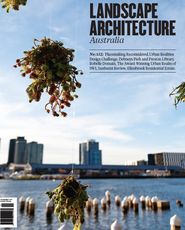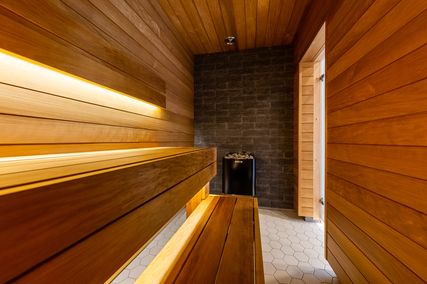When a small business finds itself in a period of significant growth it turns out that the smartest thing for it to do is close its doors and head off to subtropical Brisbane for a conference.
The theme of the conference – Transform – was interestingly the same process we find our practice working through. Our studio is growing, and in the process, transforming. So with a series of crushing deadlines looming – Claire (four months pregnant), Jeanette (mother of a young toddler) and Tara (just changing jobs – she hadn’t even started working with us) – we decided that fundamental change was not an excuse to miss the conference – call us crazy. It was a big gamble, which could have backfired badly if we’d all returned home even more exhausted than when we left, feeling uninspired and perhaps a bit ratty with each other after spending four days in an apartment together. Thankfully for us, the Brisbane conference was the circuit breaker we needed to stop, take a breath and look around. We also had a lot of fun.
For us, climate change isn’t just an academic discussion. For the regional communities we work with it is a very real issue. In the time we’ve been working with the Conargo Shire Council, they’ve had to cope with the worst drought on record, followed by floods that wiped out their first promising crops in more than a decade. To see how the council proactively tries to address the rising number of farmer suicides is both humbling and heartbreaking. Many rural communities are desperately trying to find a way to exist in the face of climate change, urbanization and globalization. Stanhope, Undera and Conargo aren’t just asking us to help them beautify their main streets. They’re asking us to help them reinvent themselves in a rather scary new world. The people in these communities are real for us. They have names, they invite us into their community halls, trust us with their local parks and ask us to help them articulate the vision they have for their towns. Stephen Sheppard’s “Make it real, make it local” message was a theme that resonated for us. His methods of making climate change visible and giving communities a voice were interesting food for thought.
Christine Ten Eyck really struck a chord for our practice. The simplicity we saw in her work belies the countless hours on the drawing board. It was a beautiful reminder to always use materials that will age well and to lose the ego in the design. I can’t remember a project where we didn’t have to “squeeze the last cent out of every dollar.” It really makes us question every element of our designs. Could we do it more simply? Is it robust enough given the limited maintenance available? Does it make the best use of local resources? I wouldn’t say we always crack it, but Christine’s work will be a guiding light for us in the future. We aspire to the carefully honed design that Christine showed us.
We have, at times, had to fight hard to steer clients away from materials we consider to be temporary – stuck-on stone, rendered blockwork or painted surfaces – preferring the honesty of materials that age gracefully. Mark Fuller showed us so beautifully that our next challenge is to encourage our councils to value both the effects of weathering and the human touch on the landscape. Some things need to be cleaned, repaired or replaced, but others are important signs of a loved space and should be allowed to tell something of the story of those who have been before. I can feel a long-running battle coming on.
Will there be a High Line park in downtown Shepparton any time soon? Happily, the design and construction of parks is our bread and butter. Amalie Wright’s beautiful collection of seminal parks will remain a source of inspiration for us.
If the Brisbane conference is anything to go by, we’d suggest joining us at the next one. We’d recommend bringing a couple of extra jumpers – Queensland’s “beautiful one day, perfect the next” state of being often required a lot of airconditioning and global warmers (doubt any of us will ever look at patio heaters the same way again). For us, it was a reminder that perhaps at the next conference we will need to give the AILA National Office the support they rely on to boldly choose a conference venue that forgoes some of our creature comforts and supports initiatives to reduce our footprint.
The 2011 AILA National Conference, Transform, was held at the Brisbane Convention & Exhibition Centre 11–13 August 2011.
Source

Discussion
Published online: 1 Nov 2011
Words:
Liesl Malan
Issue
Landscape Architecture Australia, November 2011














